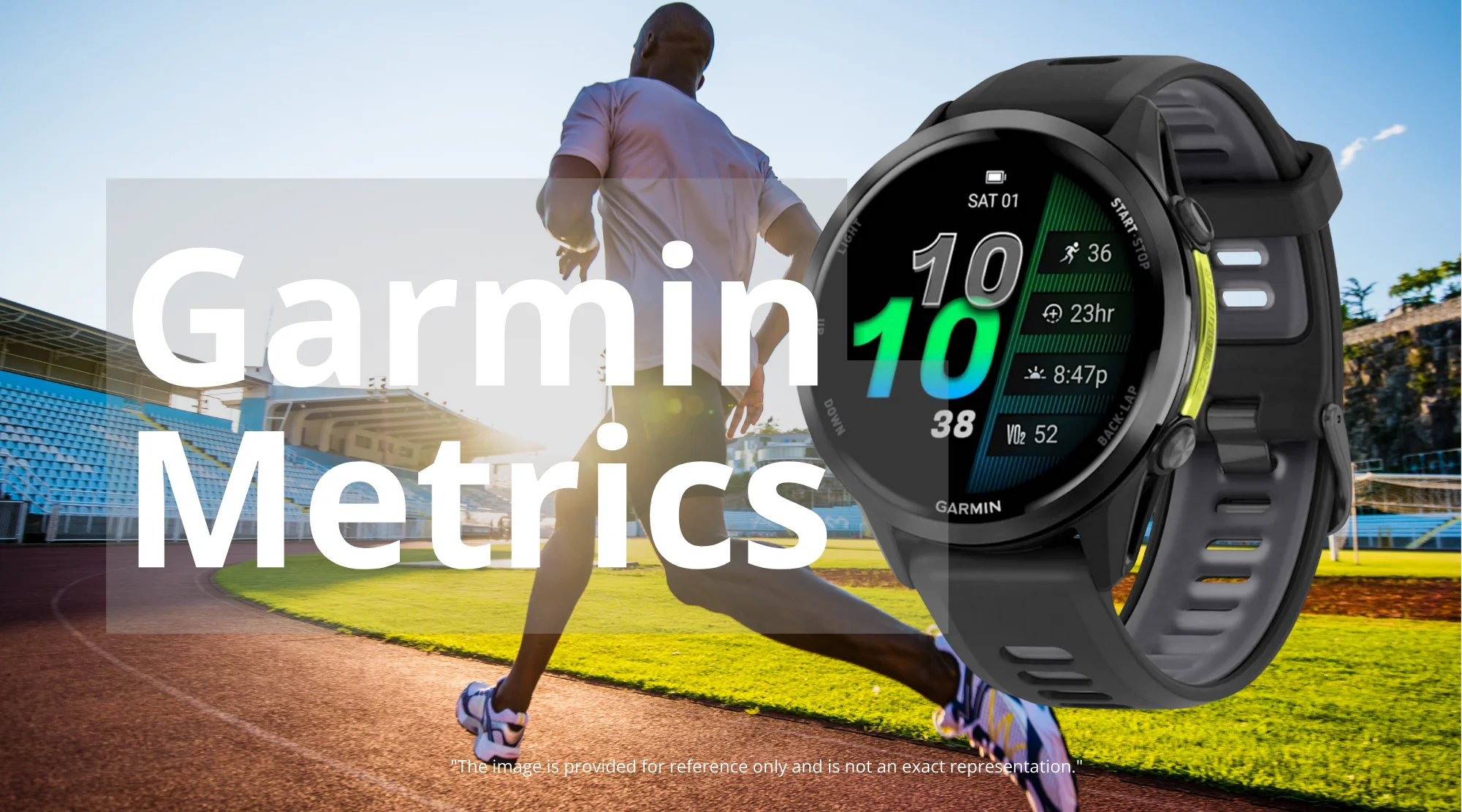Decoding Your Garmin Watch: Demystifying Training Metrics
So, you’ve invested in a Garmin smartwatch – a powerful tool designed to track your workouts and optimize your fitness. But staring at the plethora of metrics, from training status to body battery, can feel overwhelming. This comprehensive guide will break down those complex Garmin watch metrics, empowering you to understand what your watch is really telling you, and how to use this data to achieve your fitness goals. Get ready to unlock the full potential of your Garmin and take your training to the next level!

Training Status: Your Personalized Fitness Report Card
One of the most crucial, yet often misunderstood, features on your Garmin watch is Training Status. This metric provides a high-level overview of your training effectiveness. It assesses your recent training load and compares it to your fitness level, giving you a simple, one-word assessment of your progress. Think of it as your personalized fitness report card, and understanding the different statuses is key to smart training.
- Peaking: This is the gold standard. It means you’re in prime condition, perfectly tapered for a race or peak performance. You’ve likely reduced your training load, allowing your body to recover and fully realize the benefits of your hard work. Enjoy it; it’s a fleeting state!
- Productive: You’re building! Your training load is challenging you appropriately, and your fitness is increasing. You’re seeing gains, and your body is adapting positively to the stress you’re placing on it. Keep up the good work.
- Maintaining: You’re holding steady. Your current training is enough to maintain your fitness level, but not to push it higher. This is a good place to be during the off-season or during a recovery week.
- Recovery: A sign of intelligent training. You’ve dialed back your intensity, and your body is recovering. Prioritize rest and focus on your nutrition; it’s crucial for avoiding burnout and fostering long-term improvements.
- Unproductive: This status indicates that, despite your efforts, your fitness is declining. This could be due to insufficient recovery, high stress levels, poor nutrition, or an oncoming illness. Take this as a signal to adjust your training and prioritize rest.
- Detraining: This is what happens when you take a break. Your fitness naturally decreases when you significantly reduce your training volume for a week or more. It’s a normal outcome of illness, injury, or vacation.
- Strained: Your body is waving a red flag. Your fitness is suffering because you’re not recovering properly. Prioritize rest immediately. Poor HRV (Heart Rate Variability) status is often an indicator here.
- Overreaching: You’re pushing your limits with a very high training load. This can be a strategic move to shock your system before a recovery period, but it can also lead to injury if you don’t allow your body adequate recovery.
Understanding your Training Status is the first step in optimizing your training. Pay attention to the signals your body is giving you, and use this information to make informed decisions about your workouts.
Decoding the Engine Room: VO2 Max, Acute Load, and Beyond
Training Status is a great overview, but it’s based on several underlying metrics. Understanding these metrics will give you a deeper insight into your fitness. Let’s break down the core components:
VO2 Max: Your Aerobic Powerhouse
VO2 Max represents your maximum oxygen consumption during intense exercise. It’s a fundamental measure of your aerobic fitness, indicating how efficiently your body uses oxygen to produce energy. Garmin estimates your VO2 max using your pace and heart rate data from outdoor activities. While the specific number is interesting, monitoring the trend is more important. Are you improving over time? A rising VO2 max suggests your cardiovascular system is getting stronger.
Acute Load: The Measure of Your Training Intensity
Acute Load is a key metric that quantifies the volume and intensity of your recent workouts over the past seven days. It’s calculated using EPOC (Excess Post-exercise Oxygen Consumption), which estimates the amount of energy your body spends recovering after exercise. Garmin provides a target range for your Acute Load, visualizing it as a green “optimal” zone. This helps you determine if you’re training too little, too much, or just right.
Other Key Metrics and Their Significance
Beyond VO2 Max and Acute Load, other metrics contribute to your overall fitness picture:
- Training Effect: This measures the impact of your workout on your aerobic and anaerobic systems, helping you understand the benefits of each session.
- Recovery Time: This estimates how long your body needs to recover before you can perform at your best again.
- Body Battery: This is a valuable metric that estimates your energy reserves throughout the day. It considers factors like sleep, stress, and activity to provide a score that ranges from 0 to 100.
By monitoring these metrics in conjunction with your Training Status, you can gain a comprehensive understanding of your fitness, track your progress, and make informed decisions about your training schedule.
Heart Rate Variability (HRV): The Secret to Recovery
Heart Rate Variability (HRV) measures the variations in the time intervals between your heartbeats. It’s a powerful indicator of your body’s recovery and stress levels. A higher HRV generally indicates better recovery, while a lower HRV can signal fatigue, stress, or illness.
- Tracking HRV: Many Garmin watches automatically track HRV during sleep. You can also take spot measurements throughout the day.
- Interpreting HRV Data: Look for trends. A consistently declining HRV can signal the need for rest. A sudden drop in HRV could indicate illness or excessive stress.
- Using HRV to Guide Training: Use HRV to adjust your training load. When your HRV is low, consider taking a rest day or doing a lighter workout.
Understanding and utilizing HRV is an essential aspect of smart training. It helps you optimize your recovery, reduce your risk of injury, and enhance your overall performance.
Leveraging Garmin Data for Optimal Fitness
Now that you understand the key metrics, let’s look at how to use them to improve your fitness:
1. Monitor Your Training Status Regularly
Check your Training Status regularly, especially before making major changes to your workout plan. It provides a quick assessment of how your body is responding to your current training.
2. Analyze Your VO2 Max Trends
Track your VO2 Max over time. A rising trend indicates improved fitness. If your VO2 Max is stagnant or declining, review your training plan and consider adjusting your intensity, volume, or recovery periods.
3. Optimize Your Acute Load
Aim to keep your Acute Load within the optimal range. If it’s too low, you may not be challenging your body enough to make progress. If it’s too high, you risk overtraining and injury.
4. Prioritize Recovery Using HRV
Pay close attention to your HRV data. Use it to guide your recovery strategy. When your HRV is low, prioritize sleep, nutrition, and rest. Consider incorporating active recovery activities like walking or yoga. Explore the benefits of exercises like Child’s Pose for desk workers to further unwind and aid recovery.
5. Listen to Your Body
Your Garmin watch provides valuable data, but it’s not a substitute for listening to your body. Pay attention to how you feel. If you’re experiencing persistent fatigue, muscle soreness, or other symptoms, don’t ignore them. Rest and recover, even if your watch metrics suggest otherwise.
By combining the data from your Garmin watch with your subjective experience, you can create a training plan that is tailored to your individual needs and goals.
Beyond the Basics: Advanced Training Considerations
As you become more familiar with your Garmin data, you can explore more advanced training techniques:
Periodization
Use periodization to structure your training over time, cycling through phases of high-intensity training, low-intensity training, and recovery. This helps you prevent overtraining and optimize your progress.
Cross-Training
Incorporate cross-training activities to challenge your body in new ways and reduce the risk of overuse injuries. This could include swimming, cycling, or strength training. Consider exploring the benefits of outdoor exercise for a holistic approach to fitness. [Link to: Unleash Your Health: The Ultimate Guide to the Amazing Benefits of Outdoor Exercise]
Nutrition and Hydration
Fuel your body properly by eating a balanced diet and staying hydrated. Adequate nutrition and hydration are essential for optimal performance and recovery. Consider looking into the impact of fast food on a balanced diet to further understand healthy food choices. [Link to: Fast Food and a Balanced Diet: How to Make Healthy Choices]
Sleep
Prioritize sleep. Aim for 7-9 hours of quality sleep per night. Sleep is crucial for recovery and muscle repair.
By applying these advanced strategies, you can unlock even greater fitness gains and achieve your full potential.
Conclusion: Mastering Your Fitness Journey
Understanding the wealth of data provided by your Garmin watch can feel daunting at first. But, by learning to interpret key metrics like Training Status, VO2 Max, Acute Load, and HRV, you can gain valuable insights into your body’s response to training. Use this information to create a personalized training plan, optimize your recovery, and achieve your fitness goals. Remember that consistency, listening to your body, and adapting your approach as needed are the keys to long-term success. Embrace the data, but always prioritize your o














1 comment